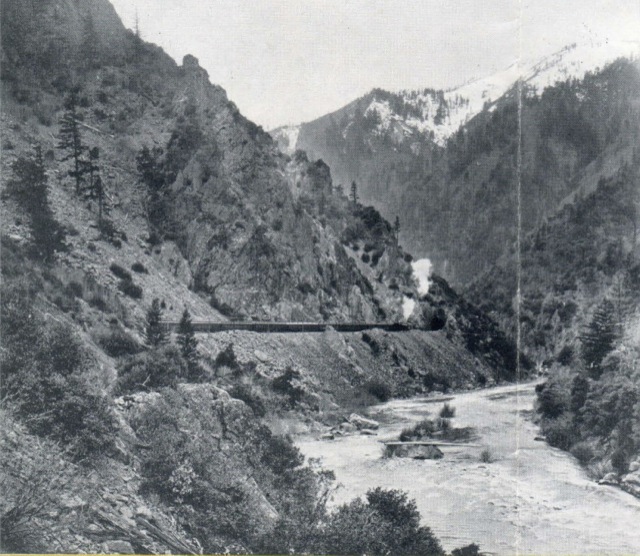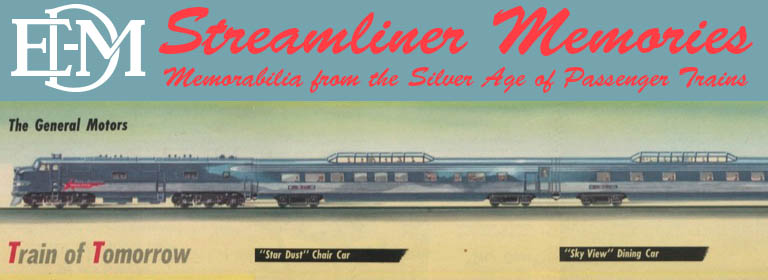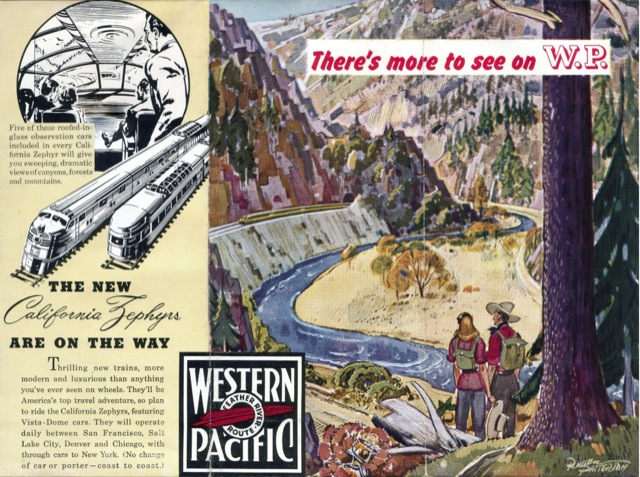After the Twin Zephyrs and the Colorado Eagle, the next great–some would say the greatest–domeliner to hit the rails was the California Zephyr. This train followed the route of the Exposition Flyer, a train that began running in 1939, the year of the Golden Gate International Exposition, after which the train was named.
The Flyer was operated by three railroads: the Burlington from Chicago to Denver; the Denver & Rio Grande Western from Denver to Salt Lake City; and the Western Pacific from Salt Lake City to Oakland. The Rio Grande and Western Pacific had a shared history, as the latter was financed and built by the former when it was under the control of George Gould.
Click image to download a 5.0-MB PDF of this brochure advertising the Exposition Flyer and announcing the California Zephyr.
The Flyer‘s route was 270 miles longer than via competitor City of San Francisco (which also traversed three railroads), mainly because the Rio Grande and WP had much more circuitous journeys through canyons and mountains. But the railroads that ran the Flyer discovered that the scenery it offered brought patrons back enough that they kept running the train long after the Golden Gate Exposition had ended.
The cover picture on the above flyer was drawn by noted artist Russell Patterson, who was more famous for his cover art of “flapper girls” (sometimes called “Patterson girls“) in the 1920s. Patterson’s view of the Exposition Flyer in California’s Feather River Canyon was obviously influenced by the photograph in the lower-left corner of page 2 of this brochure (see below). This particular spot, which would be featured in many future ads, was near a one-time gold mining town called Rich Bar where something like 50 tons of gold had been mined in the 1850s.

The brochure, which is probably from 1948, promises “thrilling new trains, more modern and luxurious than anything you’ve ever seen on wheels.” Each California Zephyr would have “five of these roof-in-glass observation cars” offering riders “sweeping, dramatic views of canyons, forests and mountains.” A close-up view of the locomotive in the picture shows that it has the Burlington’s Zephyr markings, including the fake grills on either side of the headlight, but the rectangle below the headlight reads “Western Pacific” rather than “Burlington Route.” In fact, the locomotives WP would use to pull the California Zephyr would be painted very different from the Burlington’s engines.


I just got a 1940 The Exposition Flyer timetable The scenic route to California. List all the Zephyr’s and the all new Silver Streak. I can not find much out on this table Please let me know any information on this.